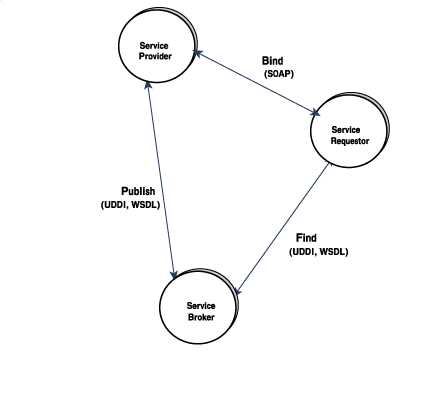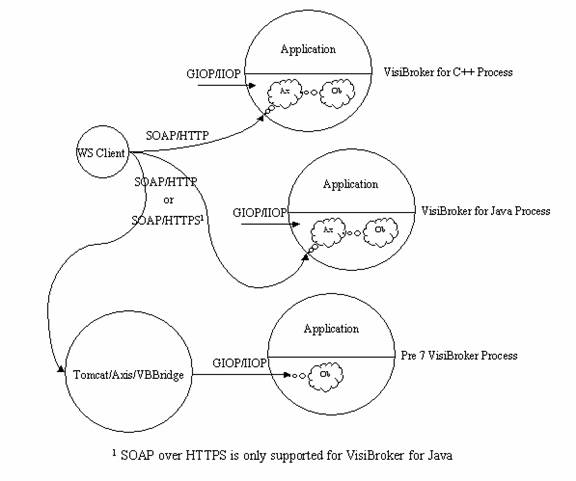|
•
|
The Service Provider registers all available web services with the Service Broker
|
|
•
|
The Service Broker publishes the web services for the Service Requestor to access. The information published describes the web service and its location. Apart from publishing the web service, it also co-ordinates in hosting the web service.
|
|
•
|
The Service Requestor interacts with the Service Broker to find the web services. The Service Requestor can then bind or invoke the web services.
|
|
Figure 40
|
|
Figure 41
|
|
Figure 42
|
|
Figure 43
|
Create a property file server.prop to set up the Web Service runtime. Following is a sample property file. The following properties configure the Service Broker to start up a HTTP server on host 143.186.141.54 at port 19000. The connection manager is set up to allow maximum of 30 concurrent connections with 300 seconds to mark the connection idle time. The thread pool to service the incoming SOAP request is setup to have maximum of 300 threads with thread idle time set to 300 seconds. For a complete list of configurable properties, see “Web Services Runtime Properties”.
You may go to http://www.oio.de/axis-wsdd/ for the details of the WSDD.
|
•
|
osagent: The object is assumed to be in osagent. The bind() method is used to locate the object. If poaName is also specified, objectName is located under that POA. This is the default value of the parameter.
|
|
•
|
nameservice: The object is assumed to be in Naming Service. The resolve() method on the root context is used to locate the object. The objectName must be the full name of the object starting from root context.
|
|
•
|
ior: The objectName provided is assumed to be an IOR. The string_to_object() method on the ORB is used to obtain the object. The IOR can be in standard form. For example:
|



